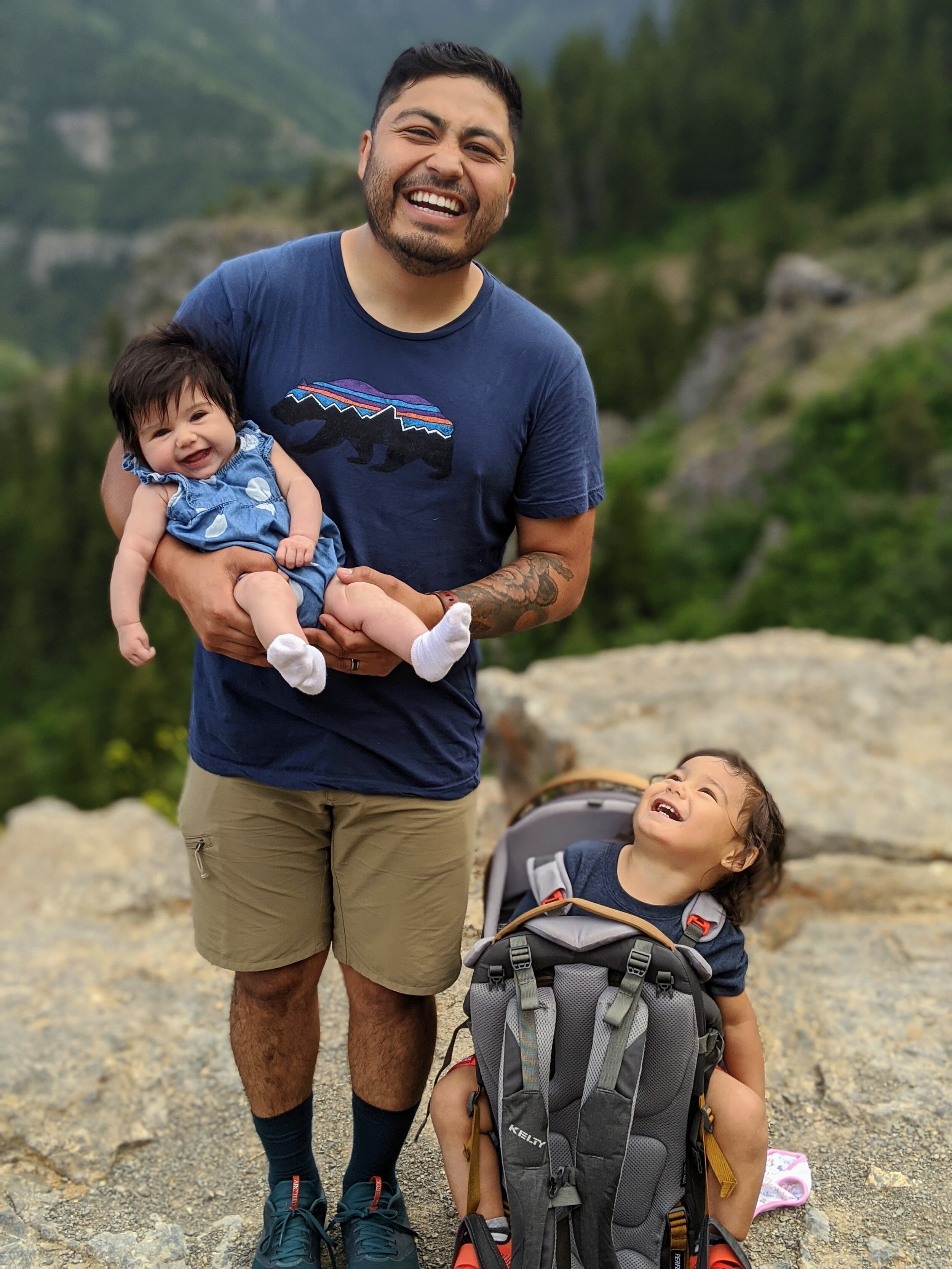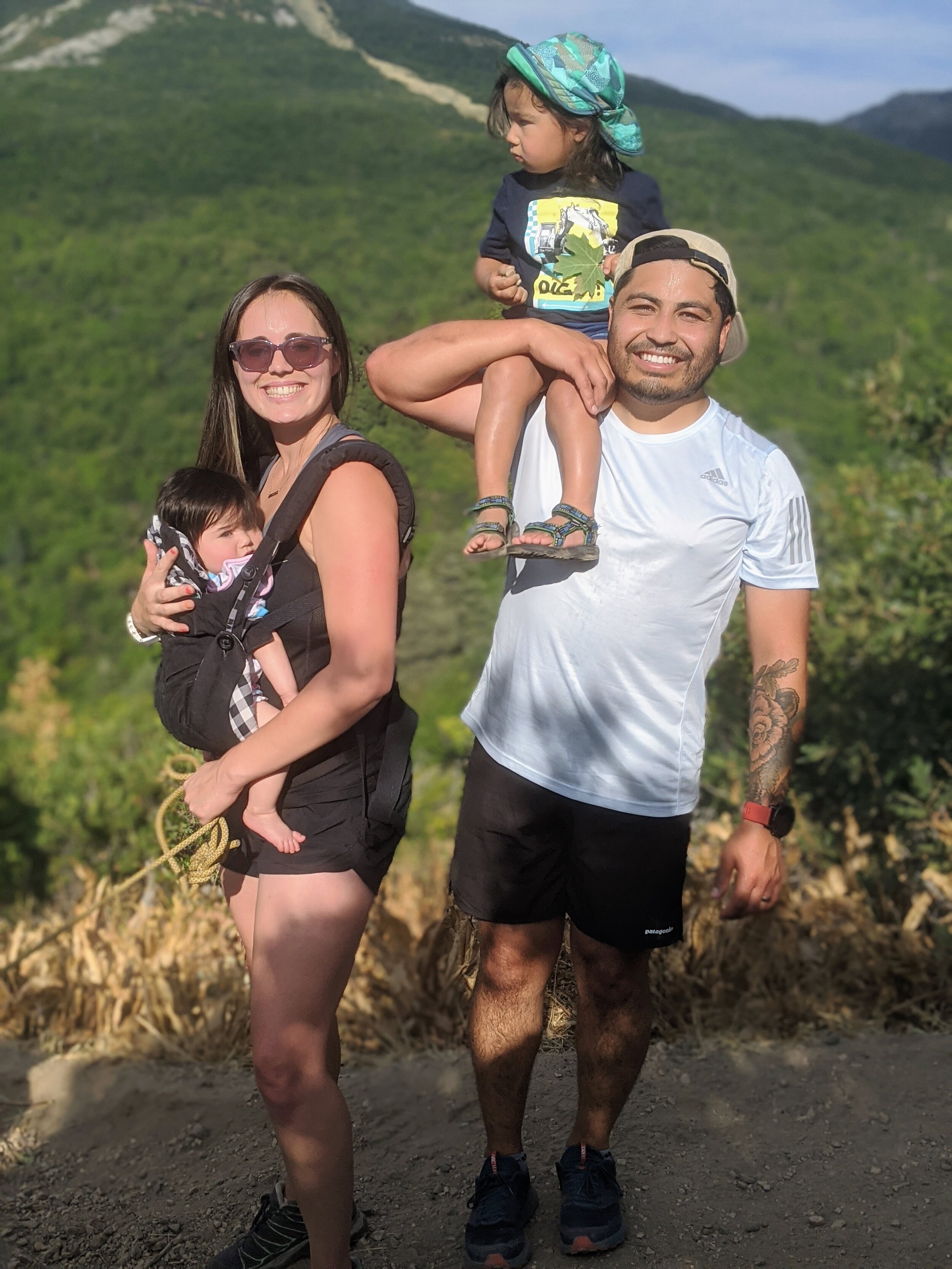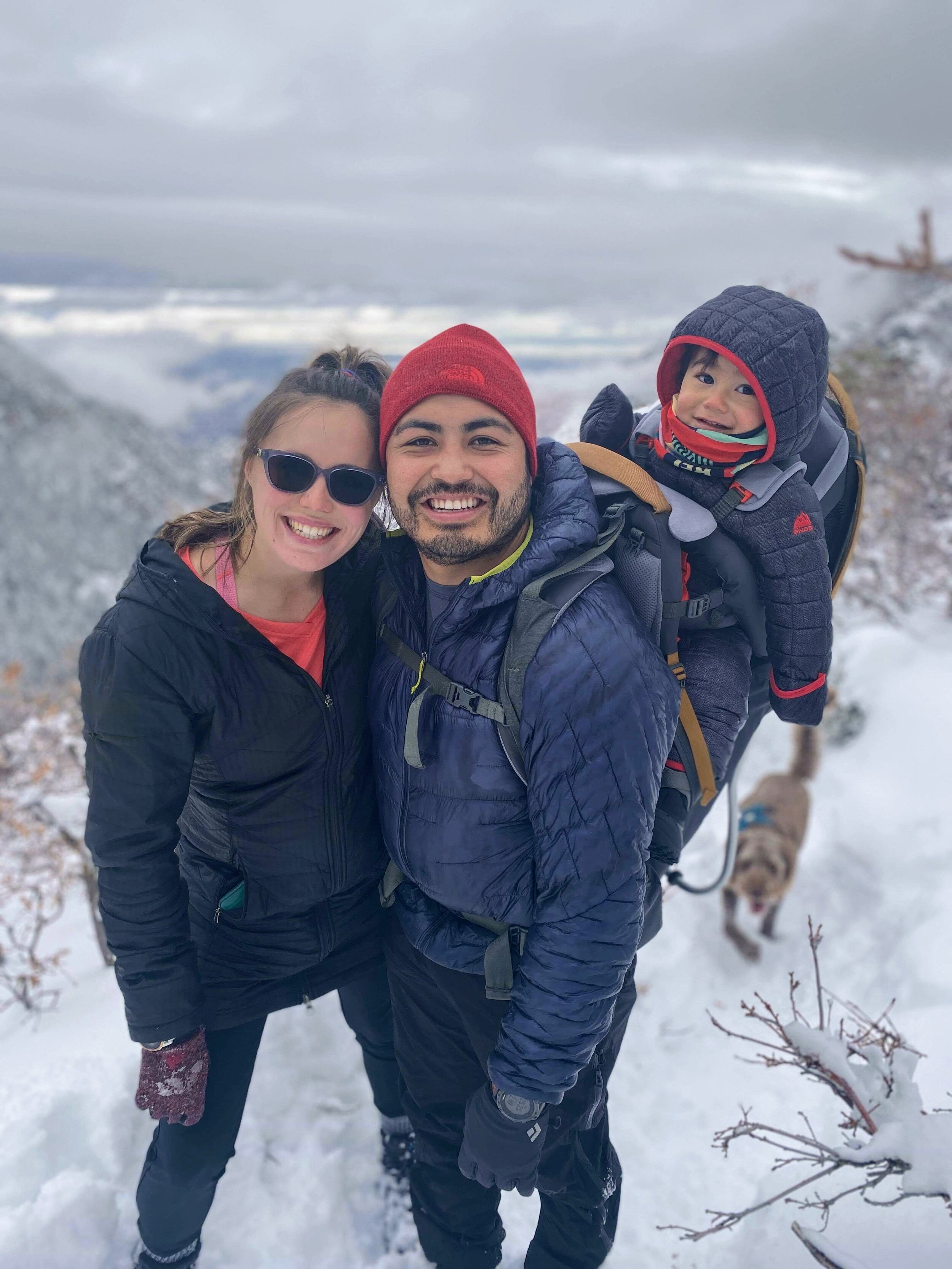5 Ways to Build a More Racially Inclusive Hiking Community
Mesa Arch is located in Canyonlands National Park in northern San Juan County, Utah on Núu-agha-tʉvʉ-pʉ̱ (Ute) land. Photo by Rezus/iStock / Getty Images
Sponsored by Visit Utah. If you have a moment, help Visit Utah better understand your perceptions and experiences in Utah by taking their survey.
As a Mexican American hiker who grew up in Utah, I’ve always had a love for the outdoors. When I was a child, we had a tradition of driving to the mountains for BBQs, or carne asadas with family and friends. My four brothers and I would roam through the trees and easily find ourselves on the nearest hiking trail. These outdoor spaces provided a sense of peace and community and, above all, warm memories. Today, as a husband and father of two biracial children, I am intentionally creating new memories so that they will grow up connected to the outdoors and to their culture.
I’m 28 years old and I’ve spent most of my life immersed in nature, hiking canyons in the Wasatch Range and riding single track trails around Salt Lake City. There’s a reason that people travel from around the U.S. and across the globe to visit Utah’s parks and wilderness areas. There is so much beauty in our state and in our diverse indigenous histories and cultures.
I often get asked why people who look like me don’t spend more time outdoors? It seems like such an innocent question, but it reminds me of the times that I have felt unwelcome in nature. I’ve gotten more than my fair share of pointed looks as the only brown person at the trail head. I’ve been racially profiled and falsely accused of stealing a mountain bike by a complete stranger whose eventual apology couldn’t undo the sense of alienation I felt in that moment and for a long time afterwards. I’ve been on the receiving end of unsolicited and hateful comments. And more often than not, I’ve been completely ignored - as if I don’t even exist.
So, how do we confront this? Well, as an educator who believes in the importance of teaching others in order to dispel ignorance, here are five recommendations that will help you become a better ally to hikers of color.
1) DO get to know us
Here’s the thing, we may experience the outdoors differently, but it doesn’t mean we’re doing the outdoors wrong. Don’t be afraid of difference - try getting to know us before making snap judgments. Many Black, Indigenous, and People of Color (BIPOC) are incredibly family-oriented and that influences how we spend time in nature. Many of us also grew up in multi-generational households or close to large extended families. If you don’t know this, your only perspective may be that brown people don’t recreate on public lands, or that we hike slowly and in large groups, or that we’re unfamiliar with trail etiquette, or that we don’t wear high-end gear, or that we speak different languages. Or maybe you’re surprised to see us at the trail head, and our presence makes you uncomfortable.
It’s true that we often bring our family along. Spending time with our family in outdoor spaces goes back to our cultural roots. And we may hike at a different pace than you, especially if we are walking with elders and small children. In addition, many BIPOC don’t approach the outdoors with a destination in mind, or with the goal of getting there as quickly as possible. We have our own resonance with the outdoors, and that’s okay. I remember taking my cousins from Florida hiking for the first time. We walked on a trail up Millcreek Canyon, where we strolled through the trees and enjoyed the gift of simply being out in nature. We only traveled about a quarter of the way up the trail before turning around. Nevertheless, it was a beautiful experience. Whether you’re a new hiker or a seasoned pro, it is so important to recognize that people connect with nature in a variety of ways that can range from spending time with family, to gathering plants for ceremonial or religious purposes, to peak-bagging.
Call to Action: Read a book about people who experience the outdoors differently than you. One that changed my entire perspective was “Black Faces, White Spaces: Reimagining the Relationship of African Americans to the Great Outdoors,” by Carolyn Finney.
2) DON'T gear shame
The world of hiking gear can be elitist, unaffordable, and complicated to navigate. Despite the homogeneity of outdoor advertisements, the truth is that not everyone can afford or wants to spend money on high-end, ultralight gear. Try to avoid making critical unsolicited comments about strangers’ gear, even if it doesn't look like yours. It is okay to see hikers with low-end gear. The only time unsolicited comments are appropriate is if someone’s gear directly and immediately compromises their safety. In that case, regardless of race or gender, please speak up.
I remember signing up for a group hike several years ago. I was so excited to finally connect with the “peak-bagging” community here in Utah, even though the word “peak-bagging” was super strange to me (it still is). I was wearing my old Adidas trainers, which were also my lawn mowing shoes. When I got there, I noticed that I was the only brown person. Everyone else in the group was white or white-passing. And while some of the others in the group were super friendly and welcomed me right away, one of the leaders made several passive aggressive comments about my footwear in front of everyone else. Jokingly, he justified his remarks by laughing and saying that I would have to be carried off the mountain. Now that I think about it, the experience was fairly traumatic. I felt ashamed and alienated from the others - even from those who had welcomed me.
The only time I think it is okay to speak up is when and if there’s an immediate risk. Here in Utah, people sometimes hike in sandals and they’re just fine. Keep in mind that all gear has limitations - regardless of whether you’re hiking in Chacos or Adidas trainers. However, if there’s no immediate risk, don’t make unsolicited comments. Examples of immediate risks would be like a person slipping and sliding on a trail. Or, a individual trying to traverse a narrow ridgeline wearing shoes with insufficient tread. You get the idea. Even then, their shoes aren’t the enemy, they simply might not allow the hiker to safely accomplish what they’ve set out to do.
Call to Action: Find an affinity group or outdoor nonprofit in your local area and donate some of your old gear to their lending library. I also really enjoy seeing people on social media post free stuff for anyone to come grab. I actually have acquired two small hiking packs from others who simply gave them away. Also, when you find yourself gear-shaming strangers, stop.
3) DO make an effort to be friendly
Have you ever found yourself wondering whether you should say hello to a stranger on the trail or wait for them to greet you first? Well, if you look around, and everyone else looks like you, that’s a privilege. Not everyone shares that experience. For many of us venturing outdoors in primarily white communities, we are always hyper-aware of “being the only one.” It can be lonely and isolating. A friendly greeting goes a long way towards making people from marginalized groups feel at home.
There are many reasons why some BIPOC avoid backcountry settings entirely — it has to do with a long history of violence and exclusion from public lands, that started with the removal of indigenous tribes to form many of our nation's treasured national and state parks. You can make the outdoors a little safer and a little more welcoming by being friendly towards hikers of color that you meet on the trail. Be the first person to say hello.
I remember a positive encounter on the trail with a mom and her baby. My wife and I had just started taking my 3-month-old son on short hikes and this hiker not only said hello, but had a friendly conversation with us about hiking with infants. We connected on such a deep level and even exchanged phone numbers.
Call to Action: Be welcoming on the trail. Take initiative and say hello first to people who don’t look like you. It really does go a long way to helping people from marginalized groups feel included — that includes anyone whose body is the frequent target of criticism in the outdoors.
4) DON'T police us or blame us for overcrowding your "favorite secret spot" on public land
It's popular but incorrect to scapegoat less-experienced hikers, who are disproportionately people of color, for "ruining the outdoors." Remind yourself that public lands and outdoor spaces are for all people. Don’t be the guy who complained to the camp host about my family’s music for being “too loud.” Later it was revealed that this individual simply didn’t like our music because it was NOT in English. Public lands are for everyone. If you feel ownership of a particular spot because your ‘family has been going there for awhile’ or because you don’t like new hikers or think they don’t follow Leave No Trace principles, it’s important to remember that the public lands have a long history that pre-dates the Antiquities Act and the national parks movement. We’re all on Native land. Often times, prejudice against newcomers can strongly influence our definitions of appropriate use and overuse. It can also cause us to scapegoat people who don’t look like us.
Call to Action: It is difficult enough being a hiker of color in a predominantly white outdoor space. Please don’t make it harder by projecting racial bias and fear onto BIPOC doing ordinary every-day activities like hiking, listening to music, parking at the trail head or camping with family and friends. If something really bothers you about the way a person is hiking or experiencing the outdoors, take some time to reflect on your biases before you speak up.
5) DO practice common courtesy
Extend simple courtesies to other hikers on the trail. Pass along information that others might not be aware of (e.g. - a closed trail, loose rocks, a bear cub up ahead, or a lottery system for permits). You can do this without being condescending or making assumptions about another hiker’s skill level or experience. It's just plain neighborly. Before you speak up, ask yourself, “is the information I am about to share necessary? Will this information help a fellow hiker remain safe on the trail? Am I making assumptions about this person’s skill level based on the color of their skin?”
Once, I was hiking in the Tetons with a group of friends. We passed a hiker descending the trail who informed us that there was a bear and her cub up ahead. She added that they had been pretty aggressive that season and asked if we had bear spray on hand. She even offered to give us an extra one from her pack. We were prepared, but I still appreciated her thoughtfulness and kindness.
Another time, I was in Banff National Park preparing to negotiate a traverse with a group of friends. A stranger sharing our campsite overheard our plans and offered to bring his snowshoes and “pack down the trail” for us so that we had a clear path.
Let’s be sure to have each other’s backs!
Call to Action: Be courteous and neighborly to fellow hikers. Don’t make assumptions about skill-level or knowledge based on race, disability, size or gender identity. Pass on information that you think would be helpful and treat those around you as you would want to be treated.
I think we can all agree that we want outdoor spaces to be safe, awe-inspiring and positive experiences for everyone. I hope that these five suggestions can help us all get to that place. Just like our destinations when we hike, it can take work and we can experience setbacks. Being a welcoming hiker requires a deeper understanding of oneself, the people around you, and the systems that we live in. In addition to these recommendations, there are other things you can do to redefine your approach to people who don’t look like you. That includes supporting BIPOC business owners, taking a class on ethnic studies, listening to BIPOC led podcasts and reading some great books about the history of race in the outdoors.
If you have a moment, help Visit Utah better understand your perceptions and experiences in Utah by taking their survey





